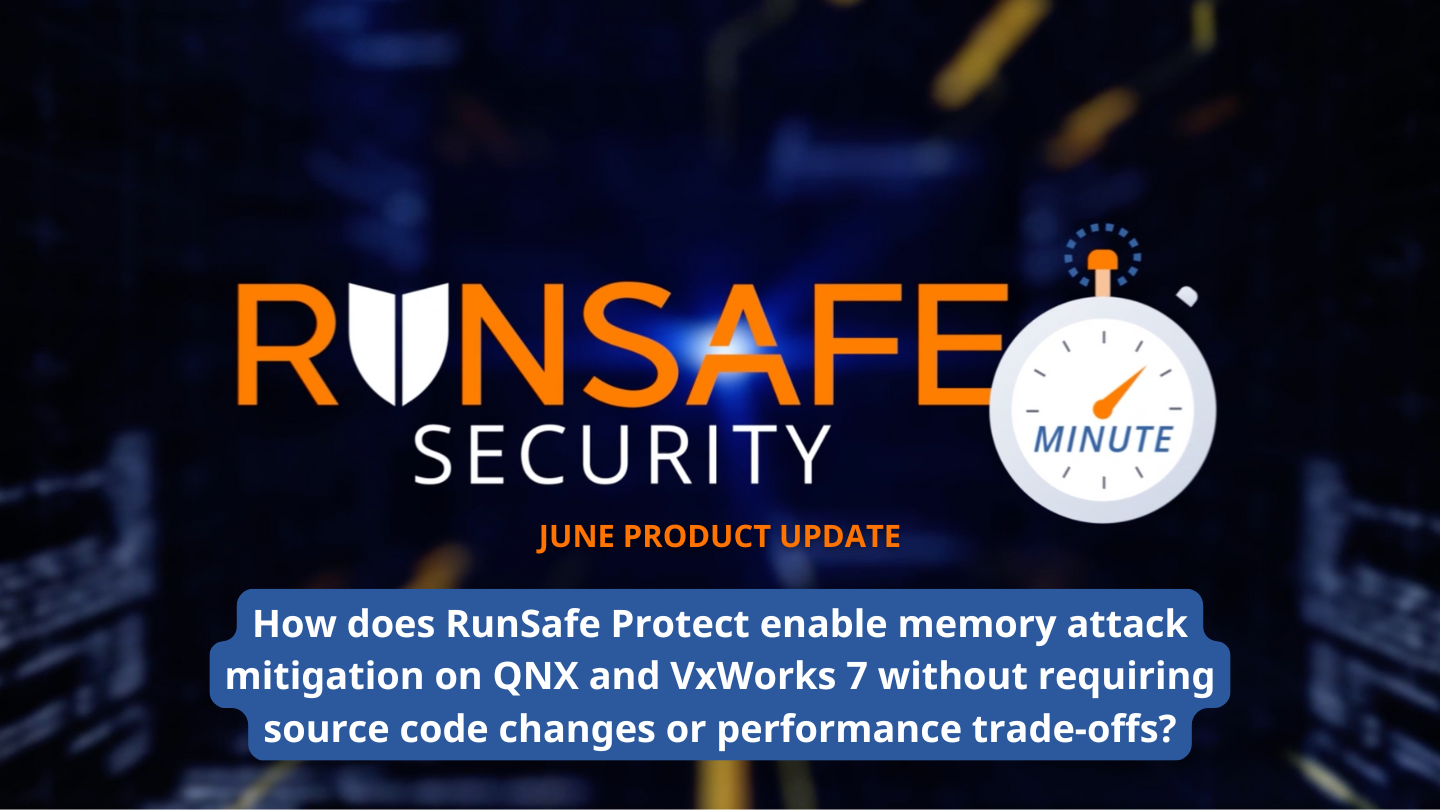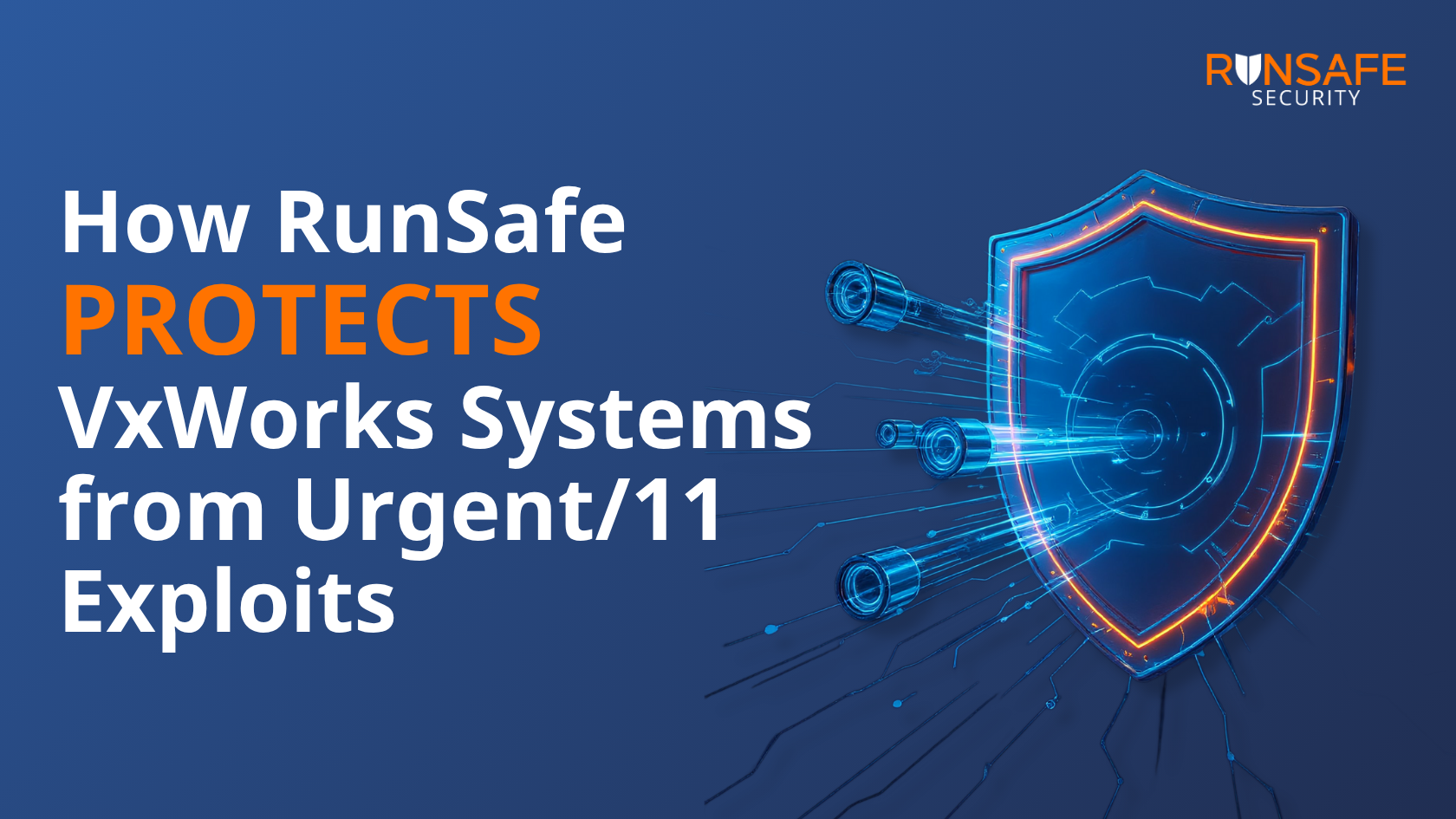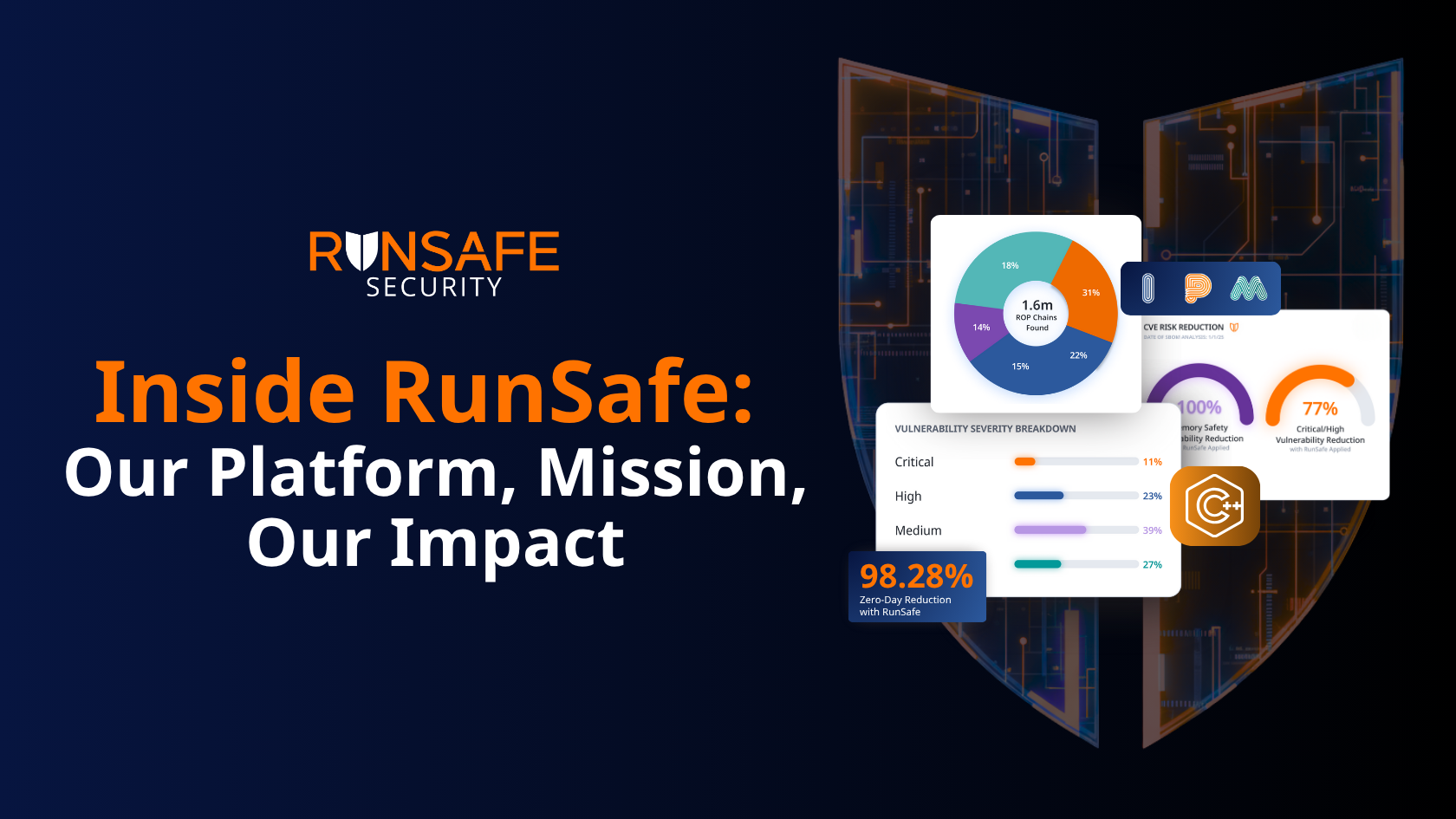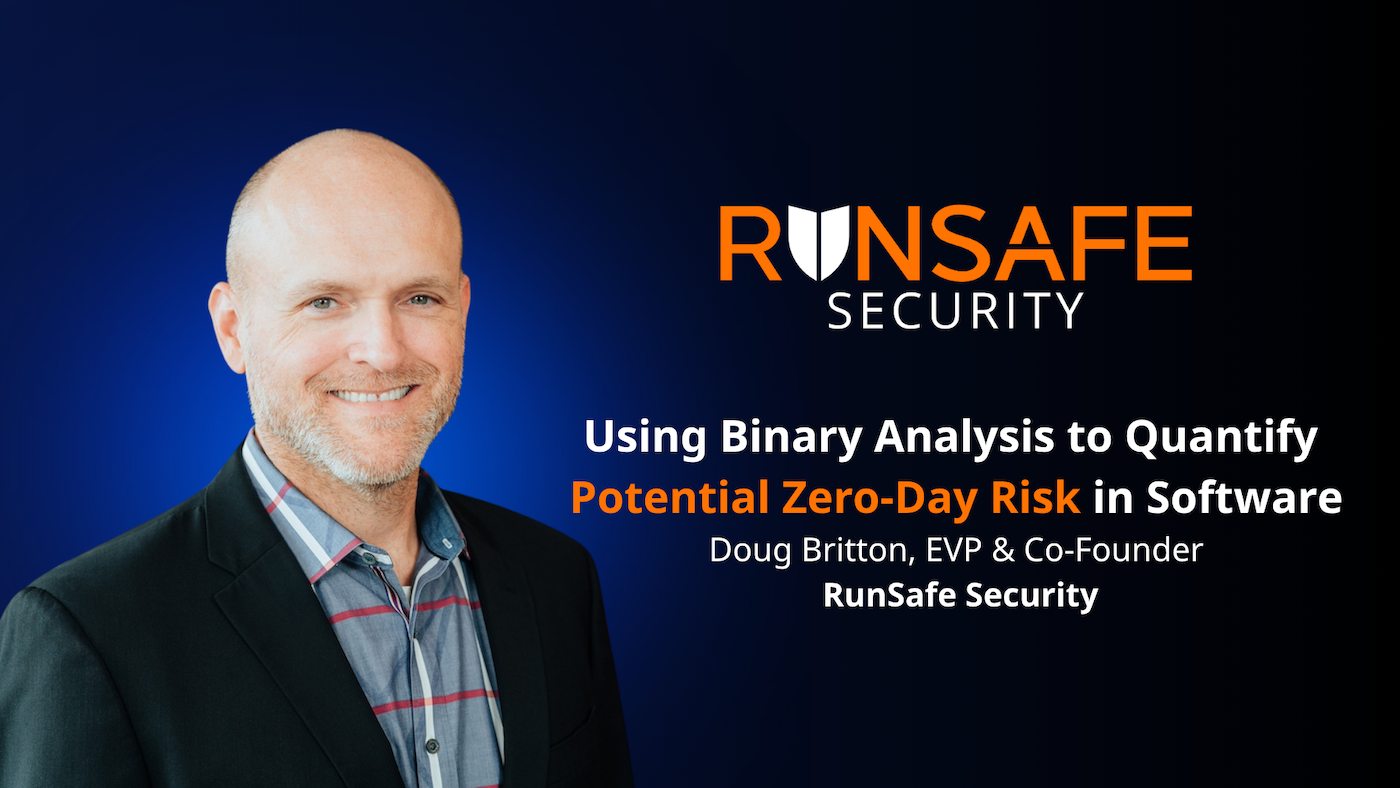Advanced Memory Protection for QNX and VxWorks—No Code Changes Required
In this RunSafe Security Minute, John Michael, Senior Software Engineer at RunSafe Security, outlines how RunSafe Protect delivers fine-grained memory attack mitigation on QNX and VxWorks 7—without modifying application source code or introducing significant runtime overhead.
By leveraging Load-time Function Randomization (LFR), RunSafe Protect defeats memory corruption techniques that rely on predicting function locations in memory. Unlike Address Space Layout Randomization (ASLR), LFR works at a more granular level, reducing risk from information leaks. The setup process is simple—just a one-line change to your makefile or a quick install script—and supports a wide range of legacy and custom build systems.
RunSafe’s wrapper utility handles metadata generation at build time, minimizing startup impact and preserving application performance. Once randomization is complete, your code runs just as before—but now with added protection from modern memory-based exploits.



